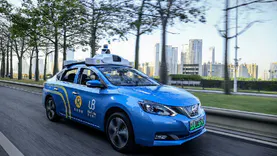On the morning of May 22nd, at the Map and Location Services Forum of the 2025 Global Spatio Temporal Intelligence Conference (WGDC25), Dr. and Senior Engineer Li Xian from the Academy of Sciences of the Ministry of Transport delivered a keynote speech on "Innovative Practices of Digital Twins in the Transportation Field". Taking the transportation field as an example, he shared specific application scenarios such as BIM highway applications, BIM waterway applications, real-time video fusion monitoring traffic solutions, VR traffic science popularization applications, VR traffic safety applications, etc.
He pointed out that the key digital twin technologies currently applied in the transportation field include VR, traffic simulation, BIM, ROT, etc. With the saturation of transportation infrastructure construction, in the next five or even ten years, more attention needs to be paid to the operation and maintenance of large-scale transportation infrastructure such as highways, waterways, or airports. The use of digital twin technology to reproduce the entire scene can provide great reference value for the later operation and maintenance process.
Regarding the development trend of digital twins in the transportation industry, he believes that in the future, intelligent connected vehicles, low altitude economy, and other scenarios can be well integrated with digital twins. After all, both low altitude economy and intelligent connected vehicles require high-precision maps as digital bases or foundations.











